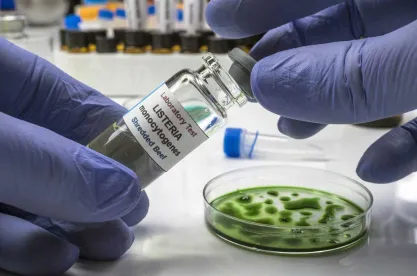-
On November 15, FDA announced a finalized rule to more effectively trace contaminated food through the food supply sourced both domestically and internationally. Foodborne illness affects millions of Americans each year. FDA’s action progresses its commitment to better protect the public by ensuring a safe and wholesome food supply through enhanced recordkeeping requirements which will allow for fast identification and removal of contaminated food from the US market.
-
The final rule, entitled “Requirements for Additional Traceability Records for Certain Foods,” establishes additional traceability recordkeeping requirements for entities that manufacture, process, pack, or hold certain food types.
-
Working closely with industry, FDA will be able to more effectively identify the origin and route of travel of certain contaminated foods to prevent or mitigate foodborne illness outbreaks, address credible threats of serious adverse health consequences or death, and minimize overly broad advisories or recalls that implicate unaffected food products.
-
“This rule lays the foundation for even greater end-to-end food traceability across the food system that we’re working on as part of the New Era of Smarter Food Safety initiative,” shared Frank Yiannas, FDA’s duty commissioner for food policy and response.
-
The traceability recordkeeping requirements purport to create a universal and harmonized approach to tracing certain foods included on the Food Traceability List (FTL). In determining what foods to include on the FTL, FDA has developed a risk-ranking model for food tracing based on the factors that Congress identified in Section 204 of the FDA Food Safety Modernization Act. Examples of identified food categories include, but are not limited to, fresh leafy greens, melons, peppers, nut butters, fresh fruits, and crustaceans.
-
The final rule, which will go into effect on November 21, 2022, includes the following key features:
-
Tracking specific points in the supply chain – such as the harvesting, cooling, initial packing, receiving, transforming, and shipping FTL foods;
-
Instituting traceability plans that contain information essential to help regulators understand an entity’s traceability program, including a description of the procedures used to maintain required records, descriptions of procedures used to identify foods on the FTL, descriptions of how traceability lot codes are assigned, a point of contact for questions regarding the traceability plan, and a farm map for those that grow or raise a FTL product;
-
Requiring industry to maintain records as original paper or electronic records, or true copies, provide requested records to the FDA within 24 hours of a request (or within a reasonable time to which the FDA has agreed), and offer records in an electronic spreadsheet when necessary to assist the FDA during an outbreak, recall, or other threat to public health.
-
FDA Advances the New Era of Smarter Food Safety, Finalizing Foundational Rule to Improve Traceability of Contaminated Foods
Wednesday, November 16, 2022
Current Public Notices
Published: 3 September, 2025
Published: 28 August, 2025
Published: 25 August, 2025
Published: 25 August, 2025
Published: 25 August, 2025
Published: 25 August, 2025
Published: 22 August, 2025
Published: 20 August, 2025
Published: 20 August, 2025
Published: 18 August, 2025
Published: 18 August, 2025
Published: 14 August, 2025
Published: 11 August, 2025
Published: 8 August, 2025
Published: 26 June, 2025



 />i
/>i
